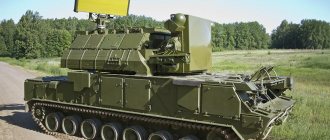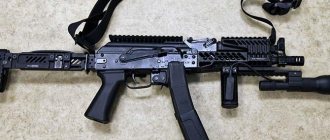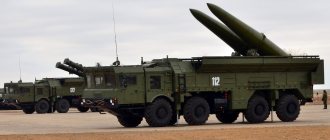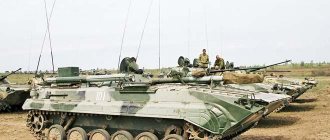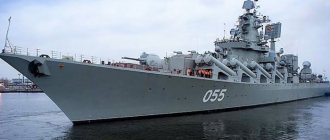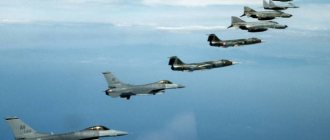The domestic Vityaz air defense system is a medium-range anti-aircraft missile system used for air defense. Weapons of the S-350 50 R6A series were developed by designers of the famous Almaz-Antey concern. The creation of military equipment began in 2007 under the leadership of chief engineer Ilya Isakov. The planned adoption of the complex into service is 2012. By 2020, the Russian Ministry of Defense intends to purchase at least 38 sets. For this purpose, factories for the construction of machines are being built (in Kirov and Nizhny Novgorod). The factories are focused on producing missile systems and radar devices of the latest generation. Let's consider the features and parameters of this strategic object, which is also exported.
general information
The Vityaz air defense system began to be developed in an experimental version in the early 90s of the last century. It was first mentioned as one of the exhibits at the Max 2001 air show. The KamAZ chassis was used as the basis. The new weapon was supposed to replace the obsolete analogue of the S-300 series. The designers successfully completed the task
The improved domestic anti-aircraft missile system is aimed at creating multi-level protection that makes it possible to secure the air and outer space of the state. This will prevent attacks from drones, manned aircraft, cruise missiles and ballistic missiles. In addition, it can hit low-flying objects. The Vityaz S 350-2017 air defense missile system will be part of the defense aerospace sector with a certain limitation of tactical capabilities against missiles. The equipment is somewhat smaller than its S-400 counterpart, but is classified as highly mobile military equipment and uses the same charges, grade 9M96E2. The effectiveness of this weapon has been tested in numerous tests both in Russia and abroad.
Purpose
If you look at the Vityaz all-terrain vehicle, no one will doubt that this is an indispensable vehicle when exploring new lands off-road in the far north, in the impenetrable forests of Siberia and the swamps of the taiga, in the steppes of Kazakhstan and on the endless snow fields of Antarctica, where ordinary tractors will not pass .
In 1995, during the fighting in Chechnya, when there was a muddy road on which military and support equipment could not pass, MTLB Vityaz were urgently airlifted from the Leningrad Military District to deliver ammunition.
Vityaz is a tracked all-terrain vehicle, also known as an amphibian, also known as a swamp vehicle, which was used to overcome the terrible consequences of the 2004 tsunami in the southern hemisphere of the globe, delivering rescuers, doctors, medicines, clean drinking water and basic necessities to the population of the affected region.
Peculiarities
In addition to the Vityaz air defense system, the aerospace defense complex will include the S-400, S-500, S-300E systems and a short-range device called Pantsir.
When designing the anti-aircraft missile system under consideration, developments in the export version of the KM-SAM type were used. It was also designed by the Almaz-Antey bureau and is aimed at the South Korean market. The active development phase began after the company won an international tender against American and French competitors. They were also actively developing air defense systems for Seoul.
Financing of the work performed was provided by the customer, which made it possible to continue working on the project in an optimal manner. At that time, the majority of defense complexes on the domestic market survived solely on export orders. Cooperation with the Koreans made it possible not only to continue work on the creation of a new complex, but also to gain valuable experience in terms of mastering modern technologies. This is largely due to the fact that South Korea did not restrict Russian designers’ access to the foreign base of elements, actively helping to develop it. This helped in many ways to create a similar design with a multi-purpose profile.
conclusions
The Fakel design bureau began creating a new air defense system of the 9M96 type back in the 80s of the 19th century. The rocket's flight duration was expected to be at least 50 kg. The anti-aircraft missile system is capable of easily maneuvering in the presence of serious overloads and launching charges with a lateral displacement design, which ensured high accuracy in destroying targets. An additional effect was provided by automatically guided warheads. At the same time, it was planned to operate these complexes in the air-to-air format. The Vityaz air defense systems were not so large in size, but at the same time they were in no way inferior in efficiency. They used 9M100 missiles. The main task set before the NATO designer at the time was the development of standardized charges that would strengthen not only internal defense, but would also be excellent for export to other countries of the world.
Presentation and appointment
The first prototype of the Vityaz S 350E air defense system, the characteristics of which are presented below, was publicly demonstrated at the Obukhov plant in St. Petersburg. (06/19/2013). From that moment on, the weapon was freed from the veil of secrecy. Serial production of the anti-aircraft missile system is carried out at the Almaz-Antey concern in the North-Western region. The main producers are the state plant in Obukhov and the radio equipment plant.
The new installation is capable of operating in self-propelled mode, aggregating with a stationary multifunctional radar. In addition, electronic space scanning and a command post based on the main chassis are provided. The Vityaz S 350 air defense system is designed to protect social, industrial, administrative and military territories from massive attacks carried out by various types of air attack weapons. The system is able to repel an attack in a circular sector from various attacks, including short and extended range missiles. The autonomous operation of the complex allows it to participate in air defense groups, controlled from higher command posts. The combat configuration of the equipment is carried out absolutely automatically, while the regular crew is responsible only for the operation and control of the weapon during combat operations.
Combat control point for the S-350 "Vityaz" air defense system
Another important component of the S-350 “Vityaz” air defense system, if not the main one, is the Combat Control Point, which is a kind of field work office. It is here that in the event of a real attack the decision will be made to intercept the enemy. The combat crew of a point consists of 3 people: the head of the combat crew, as a rule, this is the commander of the anti-aircraft missile division (central place), to the right of him is a control operator who controls multifunctional locators, and to the left is a launch operator who controls the launchers and launches missiles . However, the air defense system is also capable of being controlled in automatic mode, and in the event of an attack and detection of a target, it can re-launch missiles if the target is not hit by the first batch of missiles fired, independently choosing the number of missiles launched, including covering the enemy with a barrage of fire with several missiles. In a sense, this is similar to the action of multiple launch rocket systems, when in a certain square they literally burn out all living things. Vityaz missiles operate on the same principle in the air. Fired in one gulp, they are capable of stopping a whole flock of planes, helicopters and large attack drones, with the only difference being that, unlike conventional MLRS, Vityaz missiles still have a guidance system. But it may happen that Vityaz itself will need support. While he is working with large prey, someone must rid him of annoying flies. And this someone is the faithful guardian “Partsir”.
“Vityaz” has the ability to connect itself, the “Pantsir” and the S-400 “Triumph” complex into a single chain. And what is very important, this network will be secure. This device for telecode communication with a higher command post and with the specified systems is installed in the S-350 combat control point. This didn't happen before.
The concept of a network of centricity, as in the case of Vityaz, can be explained using the following example. Let’s say there is a single control center, which could be the national defense control center, or the A-50 aircraft. It is there that all the data received from satellites, reconnaissance systems, even just from reconnaissance infantrymen will be accumulated. And this center, like a computer server, distributes information to all allied forces involved in the area. And then the Vityaz will not only receive, but also transmit data about what is happening in the air. Thus, a fictitious soldier in a fictitious trench may know in advance that a swarm of enemy aircraft is moving in his direction. In this situation, he will at least have time to find shelter for himself in advance.
Now, after Russian designers have created another masterpiece of military thought - the S-350 Vityaz anti-aircraft missile system, the Americans have another reason to grind their teeth. However, that's their problem!
Performance characteristics of the Vityaz air defense system
Modern models of the anti-aircraft complex under consideration are mounted on the BAZ-69092-012 chassis. Below are the tactical and technical characteristics of this military equipment:
- The power plant is a diesel engine with a capacity of 470 horsepower.
- Weight in running order – 15.8 tons.
- Payload – 14.2 tons.
- The total weight after installation is up to 30 tons.
- The maximum lifting angle is 30 degrees.
- The depth of the ford is 1700 mm.
- Hitting aerodynamic/ballistic targets simultaneously – 16/12.
- The indicator for the synchronous number of induced anti-aircraft controlled charges is 32.
- Parameters of the affected area in terms of maximum range and altitude (aerodynamic targets) - 60/30 km.
- Similar characteristics for ballistic type targets - 30/25 km.
- The period of bringing the vehicle into combat condition on the march is no more than 5 minutes.
- The crew of the combat crew is 3 people.
Launch installation 50P6E
The Vityaz air defense system is equipped with a launcher, which is designed for transportation, storage, launching of anti-aircraft charges and automatic preparation before a working launch. It plays a vital role in the functionality of the entire machine.
Nominal parameters of the warhead:
- The number of missiles on the launcher is 12.
- The minimum interval between anti-aircraft ammunition launches is 2 seconds.
- Charging and discharging – 30 minutes.
- The maximum distance to the combat control point is 2 kilometers.
- The number of anti-aircraft guided missiles on the launcher is 12.
Multifunctional radar station of the S-350 "Vityaz" air defense system
The multifunctional radar is capable of detecting targets at a distance of up to 300 kilometers, establishing tracks along them, conducting precise target tracking, and guiding missiles. Each such vehicle can track exactly 8 targets and direct up to 16 missiles at them. By operating in the centimeter range, high accuracy of target tracking is achieved.
If we talk about ranges, modern radar systems (radars) work with three sizes of radio waves: meter, decimeter and centimeter. The most common in the world now are decimeter ones. This is a kind of “golden mean”. They allow you to see far and clearly. The meter range in the West has long been considered something archaic. NATO even laughed when Russia used it at stations like the Pechera P-18 from the S-125 complex. However, in 1999, during the bombing of Belgrade, it was the Pechera that saw the stealth plane, and as a result the plane was shot down.
The best option is when meter radars work in tandem with decimeter radars. This is exactly the idea of an all-seeing tandem that was proposed and implemented in Russia. This is how the Sky-M complex was born. The idea and novelty of this complex is that the radars of different wavelengths included in it do not operate independently, but adaptively interact with each other. This makes it possible to combine the advantages of these ranges, long detection ranges of all types of targets, including subtle, small-sized ones made using Stealth technology, which are inherent in the meter range, and high accuracy of coordinate measurements in the short-wave range. But radars in both the meter and decimeter ranges have their own Achilles heel - they do not recognize high-speed, small-sized targets, such as supersonic cruise missiles. But the centimeter radar that comes with the Vityaz sees them. Now it’s clear why a centimeter radar was installed on the S-350. In addition, it is compact when compared with the Sky-M antennas.
However, even such a “watchful eye” needs helpers. One of them is a passive radar antenna. This is a structure similar to a manipulator crane, which is installed on a separate vehicle. Her area of responsibility is interference. It receives the “interference” signal from the jammer. What is its importance? If the jammers jam, then the targets will simply not be visible against their background. This antenna is used precisely to detect jammers. In simple words, it is the antenna that detects what is scattering interference. This is how the enemy tries to confuse his tracks and hide. But, in the case of Vityaz, this number will not work. With the help of these machines, the exact position of the jammer is determined, target designation is issued to the combat control point, and with the help of a multifunctional radar, the target is detected and hit. This station is used for the first time at such complexes.
Multifunctional radar type 50N6E
The air defense system (S 350E "Vityaz") is equipped with a multi-purpose radar locator. It works in both circular and sector modes. This element is the main information device for military equipment of this type. The combat participation of the device is carried out fully automatically, does not require operator participation, and is controlled remotely from a command control post.
Options:
- The largest number of tracked targets in the route location range is 100.
- The number of observed targets in precision mode (maximum) is 8.
- The maximum number of accompanied anti-aircraft missiles with control is 16.
- The antenna rotation speed in azimuth is 40 rotations per minute.
- The maximum distance to the combat adjustment point is 2 kilometers.
The world has changed
“You and I are seriously behind the times here... Now tank wedges and carpet bombing are in charge.
And tactical nuclear weapons, of course.” © “The Lord of the Rings: Brotherhood and the Ring.” The world is changing, and to stay on the horse, you need to push it with all your might. The Russian military operation in Syria has very clearly shown that now and in the near future the main threat to any military facility is a short-term massive air raid using a large number of cruise missiles. They flew up, fired back and ticked away. And even with the most sophisticated complex, it is absolutely impossible to resist such a winged spam attack.
Therefore, all modern air defense systems have taken a course towards increasing the number of missiles. “Buk-M3”, “Tor-M2” and the new “Pantsir” already boast increased ammunition capacity. But what about the S-300, which still remains the backbone of Russian air defense? The S-350 will take care of this.
Guided missiles 9M96E/9M96E2
Anti-aircraft guided charges of the S 350 Vityaz air defense system, the characteristics of which are given above, are modern new-generation missiles that have absorbed the best characteristics used in modern rocketry. The element is an alloy of the highest category, used in scientific research, unconventional projects, and other design solutions. In this case, all possible achievements in materials engineering and innovative technological solutions are used. The S 350 Vityaz air defense missiles differ from each other in their propulsion units, maximum flight range, lethality in height and overall parameters.
Thanks to the introduction of new ideas and the use of an improved engine, the charges in question are superior to the French analogue "Aster". In fact, rockets are single-stage solid propellant elements, which are unified in the composition of on-board devices and other equipment, differing only in the size of the propulsion units. High performance is achieved through a combination of inertial and command guidance. At the same time, there is an effect of increased maneuverability, which allows you to configure the homing system at the meeting point with the intended target. The warheads are equipped with intelligent filling, making it possible to ensure maximum efficiency in defeating aerodynamic and ballistic analogues of air and space attacks.
Deployment[edit]
In September 2022, it was reported that the missile system was located in the city of Masyaf in the Hama province in Syria, delivered from Russia through the port of Tartus. [13]
The first launches, carried out on March 26, 2022, were positive; the air defense system successfully passed state tests. [14]
At the end of December 2022, the S-350E was officially handed over to the Russian Ministry of Defense at the Kapustin Yar training ground. The transmission provided for tracking aerodynamic targets. [15]
In February 2022, the S-350 Vityaz was officially adopted by the Air and Missile Defense Forces [ru], as the new missile system was delivered to the Academy of Aerospace Defense named after. Zhukov to prepare crews for the equipment. [16]
The Almaz-Antey Group and the Russian Ministry of Defense signed contracts for the supply of four sets of S-350 Vityaz and three regiments of S-400 Triumph in June 2022 [17].
The nuances of creating ammunition
For any missiles of the Vityaz air defense system in Syria, elements with “cold” vertical launch were used. To do this, before the propulsion engine starts, the warheads are ejected from the working storage to a height of up to 30 meters, after which they are turned towards the target using a gas-dynamic mechanism.
This decision made it possible to reduce the minimum distance of the expected interception. In addition, the system provides excellent maneuverability of the charge and increases the rocket's overload by 20 units. The ammunition in question is aimed at confronting various enemy air targets and space forces. The complex is equipped with a warhead weighing 24 kg and small-sized equipment, its weight is 4 times less than the SAM-48N6, and the general characteristics are almost in no way inferior to this charge.
Instead of the standard equipment of the 48N6 type with one launch rocket, the new complex allows you to place a package charge of four TPKs compatible with the 9M96E2 missile on the launcher. The ammunition is aimed at the target using an inertial correction system and radio correction with a radar seeker at the final point of the flight.
The joint control system guarantees a high level of targeting, helps to increase the missile channels and hit targets, and also reduces the dependence of the charge flight on external influences. In addition, such a design does not require additional lighting and location when following the intended target.
The “SAM S 350 Vityaz” system provides for the possibility of using “advanced” partially active elements that are capable of independently calculating a target using angular coordinates. The 9M100 short-range missile charge is equipped with an infrared homing warhead, which allows for target acquisition immediately after the missile is launched. It not only destroys air targets, but also destroys their warhead.
Launcher of the S-350 "Vityaz" air defense system
However, it is not enough to detect such targets, it is also important to hit them. The Vityaz's missiles are M-9 short- and medium-range missiles. These missiles have a range of up to 120 kilometers and a strike height of up to 30 kilometers. Using special combat fragmentation parts in its composition, the missile can hit any type of target, for example, a high-speed strike drone at a nearby target or a cruise missile within a radius of more than 100 kilometers. And most importantly, even those means of attack that can fly faster than a bullet are quite a working target for Vityaz missiles. However, special missiles require special testing. One of the main requirements for modern weapons systems is to perform a combat mission in all weather conditions. Thunderstorms and lightning are especially unpleasant for military equipment stuffed with electronics, and what if they end up in a loaded launcher. The consequences can be catastrophic. Therefore, they are so advanced that they can withstand lightning strikes of thousands of volts. For comparison, the current strength of a smartphone charger is 1-2 amperes, in a household outlet it is about 10 amperes, and during testing, M-9 missiles are subjected to shocks of 90 thousand amperes.
Another improvement that the Vityaz inherited from its predecessors S-300 and S-400 is the vertical launch system. By the way, the coastal missile system “Bastion” and all modern complexes with ballistic missiles, starting from “Yars” and “Topol” on land, and ending with “Bulava” at sea, work in exactly the same way according to the principle of vertical launch. The main competitor of Russian systems, the American Patriot air defense system, does not have access to this; it wastes time turning the launcher towards the target.
Modifications and performance characteristics of the missiles used
The following are the main tactical and technical characteristics that the missiles for the anti-aircraft missile system in question have:
- Aerodynamics scheme - load-bearing body with aerodynamic control (9M100)/canard with rotating wings (9M96)/analogue with a movable wing assembly (9M96E2).
- Propulsion mechanisms – solid propellant rocket motor with controlled vector / standard solid propellant rocket motor.
- Guidance and control - inertial system with radar / seeker.
- Type of control - aerodynamics plus engine thrust vector and lattice rudders or gas dynamic control.
- Length – 2500/4750/5650 mm.
- Wing span – 480 mm.
- Diameter – 125/240 mm.
- Weight – 70/333/420 kg.
- The destruction range is from 10 to 40 km.
- The speed limit is 1000 meters per second.
- A type of combat charge is a contact or high-explosive fragmentation fuse.
- The transverse load is 20 units at an altitude of 3 thousand meters and 60 near the ground.
How does an all-terrain vehicle work?
All-terrain vehicles of the "Vityaz" family are distinguished by their original layout; they consist of two articulated all-metal links connected to each other according to a trailed design. The first link is intended for the crew and is equipped with autonomous heating and ventilation systems; it contains the driver’s cabin and a passenger compartment with a capacity of up to 7 people including the driver. Immediately behind the cabin is the engine and transmission compartment. The second link of the body, connected using a special rotary coupling device, is a cargo platform covered with a tarpaulin awning.
Swivel hitch
The rotary coupling device (PSU) is equipped with two hydraulic control cylinders, with the help of which the driver can control the folding of the links in two planes - horizontal and vertical. Thanks to this design, Vityaz all-terrain vehicles have amazing maneuverability and are able to overcome obstacles up to 1.5 meters high and up to 4 meters wide. Vertical folding hydraulic cylinders are: shock absorbers - provide high smoothness when moving; a device for forced folding of links in a vertical plane - allows you to overcome vertical walls up to 1.5 meters high. The possibility of forced blocking of vertical folding hydraulic cylinders allows you to cross ditches up to 4 meters wide. By ensuring mutual rotation of the links in the longitudinal-vertical plane, the PSU allows the conveyor tracks to have maximum traction with the ground.
Engine
Vityaz all-terrain vehicles, depending on the modification, are equipped with various turbocharged diesel engines, such as V46-5SU, YaMZ-8401.10, as well as engines from the American company Cummins Inc together with an English 6-speed Allison automatic transmission. The engines are started by an electric starter from 24 V batteries, or by pneumatic start using compressed air from cylinders. A combined heating system with forced thermosiphon circulation of liquid and oil allows the engine to be started at ambient temperatures down to −50°C.
Transmission
The transmission of the Vityaz all-terrain vehicles is either hydromechanical 4-speed semi-automatic or 6-speed automatic, depending on the engine. Braking is carried out thanks to floating-type band brakes with a pneumatic drive, as well as using a backup mechanical drive for controlling the front link brakes. A four-speed gearbox with a locking differential allows you to select the optimal driving mode for the conveyor in any road conditions. For efficient power transmission, each link has two planetary final drives and one bevel gearbox with a locking differential. In a variant version, Vityaz conveyors are equipped with a six-speed automatic hydromechanical transmission.
Chassis
All-terrain vehicles "Vityaz" are driven by 4 wide rubber-fabric caterpillar tracks with metal lugs. These tracks provide high maneuverability, as well as low pressure on the ground, ensuring environmental safety in terms of impact on soil and vegetation without disruption or destruction. The smooth movement of all-terrain vehicles is achieved thanks to the independent torsion bar suspension of the original road wheels with sponge filling, drive wheels with a polyurethane coating, as well as rubber elements in the chassis. The drive and idler wheels are covered with a special polyurethane coating, rubber elements are used in the chassis - all this dampens jerks and shocks, ensures a smooth ride when the machine is moving, increasing the life of the chassis and transmission as a whole. The design of the drive wheels prevents icing of the chassis components at subzero temperatures. The spacing of the crossbars is selected for effective self-cleaning of the elements of the conveyor chassis from dirt, snow and ice.
